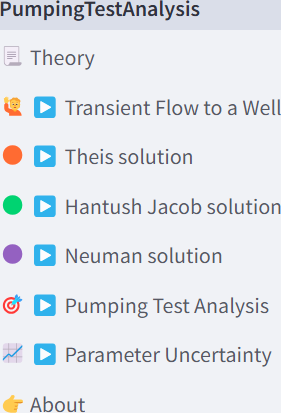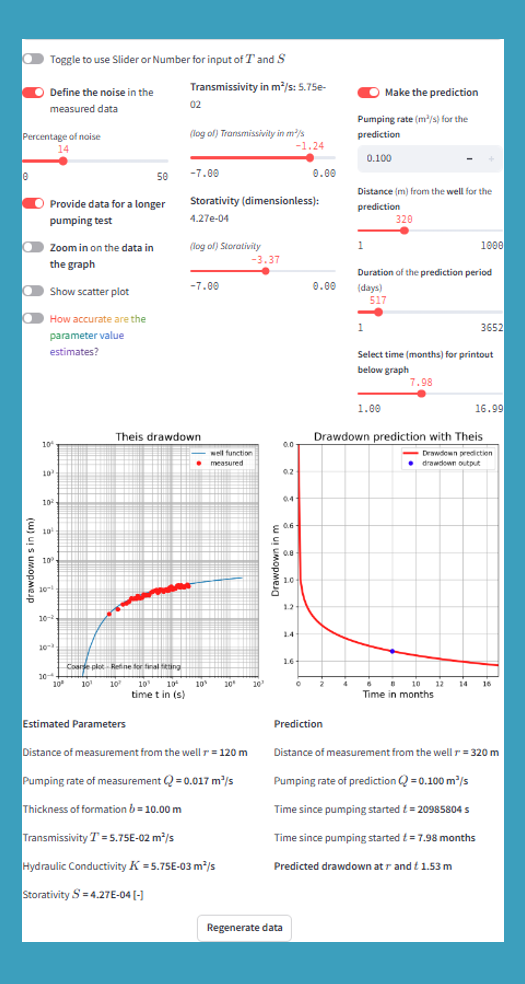Important Note: This interactive tool is designed for educational use.
Pumping tests are one of the most important methods for acquiring information about groundwater systems. A pumping test provides values of aquifer transmissivity and storativity and in some settings, other hydraulic parameter values. This application is designed to introduce the evaluation of pumping tests for confined, unconfined, and leaky aquifers, including theoretical explanations with interactive applications and exercises. Quizzes inside the application allow you to assess your understanding. The underlying theory is provided as a concise overview at the beginning.
A module is a self-guided set of Lesson Units with step-by-step instructions allowing the user to work through the material at their own pace and compare their work to prepared solutions for some of the problems. In the final unit, Parameter Uncertainty, you can analyze pumping test data to determine parameter values, then compare the prediction of drawdown for other pumping rates and durations using your values with the results obtained for best-fit parameter values. This provides a sense of the importance of a precise fit to field data to the accuracy of drawdown prediction as a function of time since pumping began and distance of the prediction location from the well.

First, the formation of a cone of water-level drawdown expanding outward from a well over time in response to groundwater abstraction is discussed. Then, the module explores how pumping test data can be evaluated to estimate hydraulic parameters for confined, leaky, and unconfined aquifers.
Opportunities are offered to explore the evaluation methods with a few different data sets, including the folowing.
- Ideal synthetic data
- Field data from the Varnum test site in Sweden
- Field data from the Viterbo test site in Italy
- Field data from the Pirna test site in Germany
- Your own imported data

